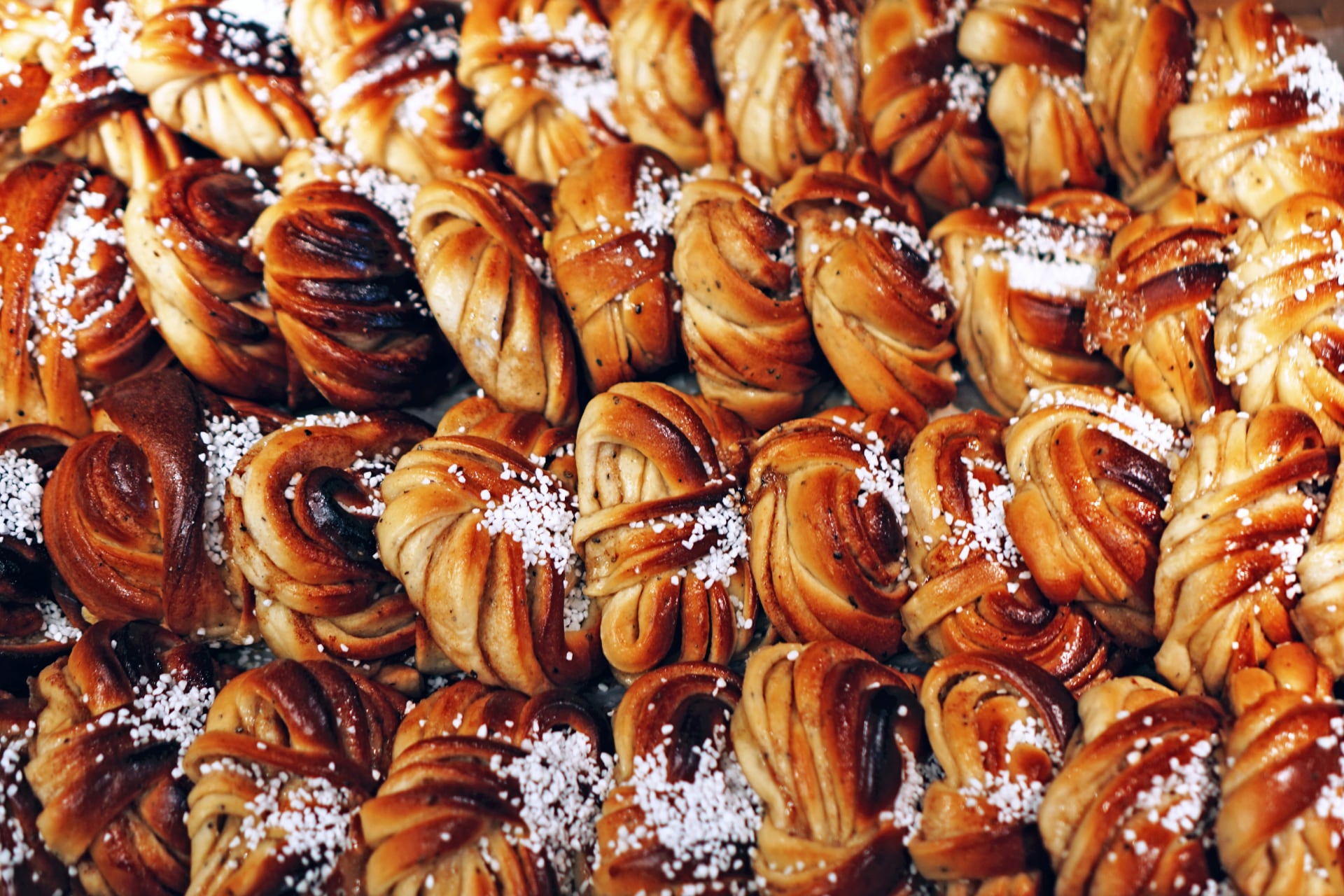Sweden, a country known for its stunning landscapes and vibrant culture, also boasts a rich culinary heritage that spans centuries. From hearty traditional dishes that reflect the country’s history and climate to innovative contemporary cuisine that embraces sustainability and local ingredients, Sweden offers a diverse and delicious food scene. In this guide, we will take you on a culinary tour of Sweden, featuring iconic traditional dishes, cutting-edge modern cuisine, and recommendations for the best restaurants to try. Whether you’re a food enthusiast or a curious traveler, this guide will help you discover the best of Swedish gastronomy.
Traditional Swedish Dishes
Swedish Meatballs (Köttbullar)
Swedish meatballs, or köttbullar, are perhaps the most iconic of all Swedish dishes. Known globally, these small, savory meatballs are a staple in Swedish cuisine and are traditionally served with creamy gravy, lingonberry sauce, and boiled potatoes or mashed potatoes.
Overview
Swedish meatballs hold a special place in Swedish culture, often associated with comfort food and home cooking. They are a must-try for anyone visiting Sweden, offering a taste of traditional Swedish hospitality and culinary expertise.
Ingredients and Preparation
The classic recipe for Swedish meatballs includes a mix of ground beef and pork, breadcrumbs soaked in milk, finely chopped onions, and a blend of spices like allspice and white pepper. The meatballs are typically fried until golden brown and then simmered in a rich, creamy gravy made from pan drippings, beef broth, and heavy cream.
Where to Try
For an authentic experience, head to Pelikan in Stockholm, a traditional Swedish restaurant known for its excellent meatballs and other classic dishes. Another great spot is Operakällaren in Stockholm, which offers a more upscale dining experience.
Gravlax
Gravlax, a cured salmon dish, is a quintessential part of Swedish cuisine. Traditionally served as an appetizer, gravlax is made by curing fresh salmon with a mixture of salt, sugar, and dill.
Overview
Gravlax has been enjoyed in Sweden for centuries, originally as a method of preserving fish. Today, it is a delicacy often found at celebrations, smörgåsbord buffets, and high-end restaurants.
Ingredients and Preparation
The preparation of gravlax involves curing the salmon in a blend of salt, sugar, and dill, often with additional flavors like white pepper, coriander seeds, or a splash of aquavit. The salmon is then thinly sliced and served with a mustard-dill sauce (hovmästarsås), on rye bread or with boiled potatoes.
Where to Try
For some of the best gravlax in Stockholm, visit Lisa Elmqvist located in Östermalms Saluhall, a historic food hall renowned for its seafood. Another excellent option is Sturehof, a classic brasserie in the heart of the city.
Jansson’s Temptation (Janssons Frestelse)
Jansson’s Temptation, or Janssons Frestelse, is a beloved Swedish casserole made with potatoes, onions, pickled sprats, and cream. It is a staple at festive occasions, especially during Christmas.
Overview
Named after the opera singer Pelle Janzon, Jansson’s Temptation is a dish that combines creamy, salty, and savory flavors. It is a comfort food that has become an integral part of Swedish holiday traditions.
Ingredients and Preparation
The casserole is made by layering thinly sliced potatoes and onions with pickled sprats (similar to anchovies) and baking them in cream until golden and bubbly. The result is a rich, flavorful dish that pairs well with various meats and vegetables.
Where to Try
You can find this classic dish at traditional Swedish restaurants like Den Gyldene Freden in Stockholm, one of the oldest restaurants in the city, serving authentic Swedish cuisine since 1722.
Prinsesstårta
Prinsesstårta, or Princess Cake, is a beloved Swedish dessert consisting of layers of sponge cake, raspberry jam, pastry cream, and whipped cream, all encased in a bright green marzipan shell.
Overview
Prinsesstårta is a festive cake that is often enjoyed during celebrations like birthdays and weddings. Its distinctive green color and dome shape make it instantly recognizable.
Ingredients and Preparation
The cake layers are assembled with raspberry jam and pastry cream, then covered in a generous layer of whipped cream. The cake is then wrapped in marzipan, traditionally green, and topped with a pink marzipan rose.
Where to Try
For a taste of this iconic cake, visit Vete-Katten in Stockholm, a historic bakery and café known for its delicious pastries and traditional Swedish cakes. Another great spot is Tössebageriet, a renowned bakery with a long tradition of pastry making.
Other Notable Dishes
- Raggmunk: Traditional potato pancakes often served with fried pork and lingonberry sauce.
- Kroppkakor: Potato dumplings filled with pork, onions, and spices, typically served with butter and lingonberry sauce.
Contemporary Swedish Cuisine
New Nordic Cuisine
The New Nordic cuisine movement has put Scandinavian countries, including Sweden, on the global culinary map. This gastronomic trend emphasizes local, seasonal, and sustainable ingredients, presenting traditional flavors in innovative ways.
Overview
New Nordic cuisine focuses on purity, simplicity, and freshness. It often involves foraging for wild ingredients, using traditional preservation methods like smoking and pickling, and presenting dishes in a visually stunning, minimalist style.
Key Ingredients
Typical ingredients include root vegetables, berries, wild herbs, mushrooms, game, and fish. The emphasis is on fresh, organic, and locally sourced produce, reflecting the natural landscapes and seasons of Sweden.
Notable Chefs and Restaurants
- Magnus Nilsson: Formerly at Fäviken in Jämtland, Magnus Nilsson was a pioneer of the New Nordic cuisine movement. Although Fäviken is now closed, its influence on Swedish cuisine remains profound.
- Björn Frantzén: Chef at Frantzén, a three-Michelin-starred restaurant in Stockholm, known for its creative and meticulously crafted dishes.
Innovative Dishes
Contemporary Swedish cuisine often blends traditional flavors with modern techniques, resulting in unique and exciting dishes that reflect both heritage and innovation.
Overview
Chefs across Sweden are experimenting with new ways to present classic ingredients, incorporating global influences while staying true to local traditions. This fusion of old and new creates a dynamic and evolving food scene.
Examples
- Reindeer Tartare: A modern twist on traditional Sami cuisine, often served with lingonberries and wild herbs.
- Sea Buckthorn Sorbet: A refreshing dessert using the tart, citrusy berries native to Sweden’s coasts.
Where to Try
For contemporary dishes that highlight the best of New Nordic cuisine, visit Oaxen Slip in Stockholm. This bistro offers a range of innovative yet accessible dishes using locally sourced ingredients. Another great spot is Agrikultur, a small, intimate restaurant focusing on sustainable dining and seasonal produce.
Vegetarian and Vegan Options
Sweden has seen a significant rise in vegetarian and vegan cuisine, with many restaurants now offering creative and delicious plant-based options.
Overview
The growing demand for sustainable and health-conscious dining has led to a vibrant vegetarian and vegan food scene in Sweden. Many restaurants are embracing this trend, offering menus that cater to various dietary preferences.
Notable Restaurants
- Hermans: Located in Stockholm, Hermans is a popular vegetarian and vegan buffet restaurant known for its diverse and flavorful dishes, as well as its stunning views over Stockholm.
- Kafe de luxe: Situated in Växjö, Kafe de luxe offers a range of vegetarian and vegan options in a cozy, eclectic setting.
Street Food and Casual Dining
The street food scene in Sweden has grown rapidly, offering a range of casual and gourmet options that are perfect for quick bites and food on the go.
Overview
Street food markets and food trucks have become increasingly popular, providing a platform for chefs to experiment with new concepts and reach a wider audience.
Examples
- Hornstulls Marknad: This popular street food market in Stockholm features a variety of vendors offering everything from traditional Swedish dishes to international cuisine. For more information, visit Hornstulls Marknad.
Best Restaurants in Sweden
Stockholm
Stockholm is home to some of Sweden’s most renowned restaurants, offering a mix of traditional and contemporary cuisine. Here are a few must-visit spots:
Frantzén
Frantzén is a three-Michelin-starred restaurant led by Chef Björn Frantzén. Known for its innovative take on New Nordic cuisine, Frantzén offers a dining experience that combines creativity, precision, and exquisite flavors.
- Cuisine: New Nordic, Innovative
- Highlights: Seasonal tasting menu, expertly crafted dishes
- Location: Klara Norra kyrkogata 26, Stockholm
Oaxen Krog & Slip
Oaxen Krog & Slip is a two-in-one dining destination located on Djurgården island. Oaxen Krog is a fine-dining restaurant with two Michelin stars, while Oaxen Slip is a more casual bistro offering traditional Swedish fare with a modern twist.
- Cuisine: New Nordic, Traditional
- Highlights: Sustainable ingredients, beautifully presented dishes
- Location: Beckholmsvägen 26, Stockholm
Gothenburg
Gothenburg, Sweden’s second-largest city, boasts a vibrant food scene with a strong emphasis on seafood and innovative cuisine.
Restaurant 28+
Restaurant 28+ is one of Gothenburg’s most esteemed dining establishments, known for its elegant atmosphere and meticulously crafted dishes. The restaurant has held a Michelin star for many years, reflecting its high standards and exceptional quality.
- Cuisine: Modern European, Fine Dining
- Highlights: Seasonal tasting menus, extensive wine list
- Location: Götabergsgatan 28, Gothenburg
Bhoga
Bhoga is a Michelin-starred restaurant that focuses on seasonal and locally sourced ingredients. The menu changes frequently to reflect the best produce available, offering a dynamic and exciting dining experience.
- Cuisine: Modern European, Innovative
- Highlights: Creative dishes, locally sourced ingredients
- Location: Norra Hamngatan 10, Gothenburg
Malmö
Malmö, known for its diverse culinary scene, offers a range of dining options from high-end restaurants to trendy bistros.
Bastard
Bastard is a popular restaurant in Malmö known for its rustic, nose-to-tail approach to cooking. The menu emphasizes locally sourced ingredients and simple, hearty dishes.
- Cuisine: European, Rustic
- Highlights: Seasonal menu, relaxed atmosphere
- Location: Mäster Johansgatan 11, Malmö
Lyran
Lyran is a small, innovative restaurant that focuses on using fresh, local ingredients to create unique and flavorful dishes. The menu is constantly evolving, ensuring a fresh experience with each visit.
- Cuisine: Modern European, Innovative
- Highlights: Ever-changing menu, intimate setting
- Location: Simrishamnsgatan 36A, Malmö
Tips for Enjoying Swedish Cuisine
Embrace Local Customs
Understanding and embracing local dining customs can enhance your culinary experience in Sweden. Here are a few tips:
- Fika: Participate in the Swedish tradition of fika, a coffee break accompanied by pastries or sandwiches. It’s a social institution in Sweden and a perfect opportunity to sample local treats like cinnamon buns (kanelbullar).
- Seasonal Eating: Swedes place a strong emphasis on seasonal and locally sourced ingredients. Try to sample dishes that highlight the best of what each season has to offer.
Make Reservations
Sweden’s best restaurants, particularly in cities like Stockholm and Gothenburg, often require reservations. Booking ahead ensures you get a table at popular spots like Frantzén, Oaxen Krog, or Bhoga. Use restaurant websites or apps like TheFork to make reservations easily.
Explore Food Markets
Visiting local food markets is a great way to experience Swedish cuisine and culture firsthand. Markets like Stockholm’s Östermalms Saluhall or Gothenburg’s Feskekôrka offer a wide variety of fresh produce, seafood, and traditional Swedish foods. It’s also an excellent opportunity to interact with local vendors and learn more about Swedish ingredients and cooking techniques.
Try a Smörgåsbord
A traditional Swedish smörgåsbord is a buffet-style meal featuring a variety of hot and cold dishes. It’s a great way to sample multiple Swedish specialties in one sitting. Look for restaurants offering a smörgåsbord, especially during holidays like Christmas and Midsummer.
Don’t Miss Seasonal Specialties
Sweden has many seasonal dishes that are worth trying. Here are a few to look out for:
- Semla: A cream-filled cardamom bun traditionally eaten during Lent.
- Sill: Pickled herring, often served with new potatoes and dill during midsummer.
- Surströmming: Fermented herring, a unique and traditional dish usually enjoyed in late summer.
For more tips and recommendations, visit Visit Sweden’s culinary guide.
Conclusion
Sweden’s culinary landscape is rich and diverse, offering everything from traditional comfort foods to cutting-edge modern cuisine. Exploring this country’s food scene allows you to connect with its culture, history, and innovative spirit.
Reflecting on the Culinary Journey
From the classic flavors of Swedish meatballs and gravlax to the innovative dishes of New Nordic cuisine, Sweden offers a unique culinary adventure. The emphasis on local, seasonal ingredients and sustainable practices ensures that every meal is not only delicious but also reflective of the country’s natural beauty and resources.
Encouragement for Food Lovers
We encourage you to dive into Sweden’s culinary delights, whether you’re visiting bustling city restaurants or cozy countryside eateries. By embracing both traditional dishes and contemporary innovations, you’ll gain a deeper appreciation for Swedish cuisine and the culture it represents.
For more information and to start planning your culinary journey, visit Visit Sweden and Sweden’s Official Site.
Happy eating and enjoy discovering the flavors of Sweden!





0 Comments